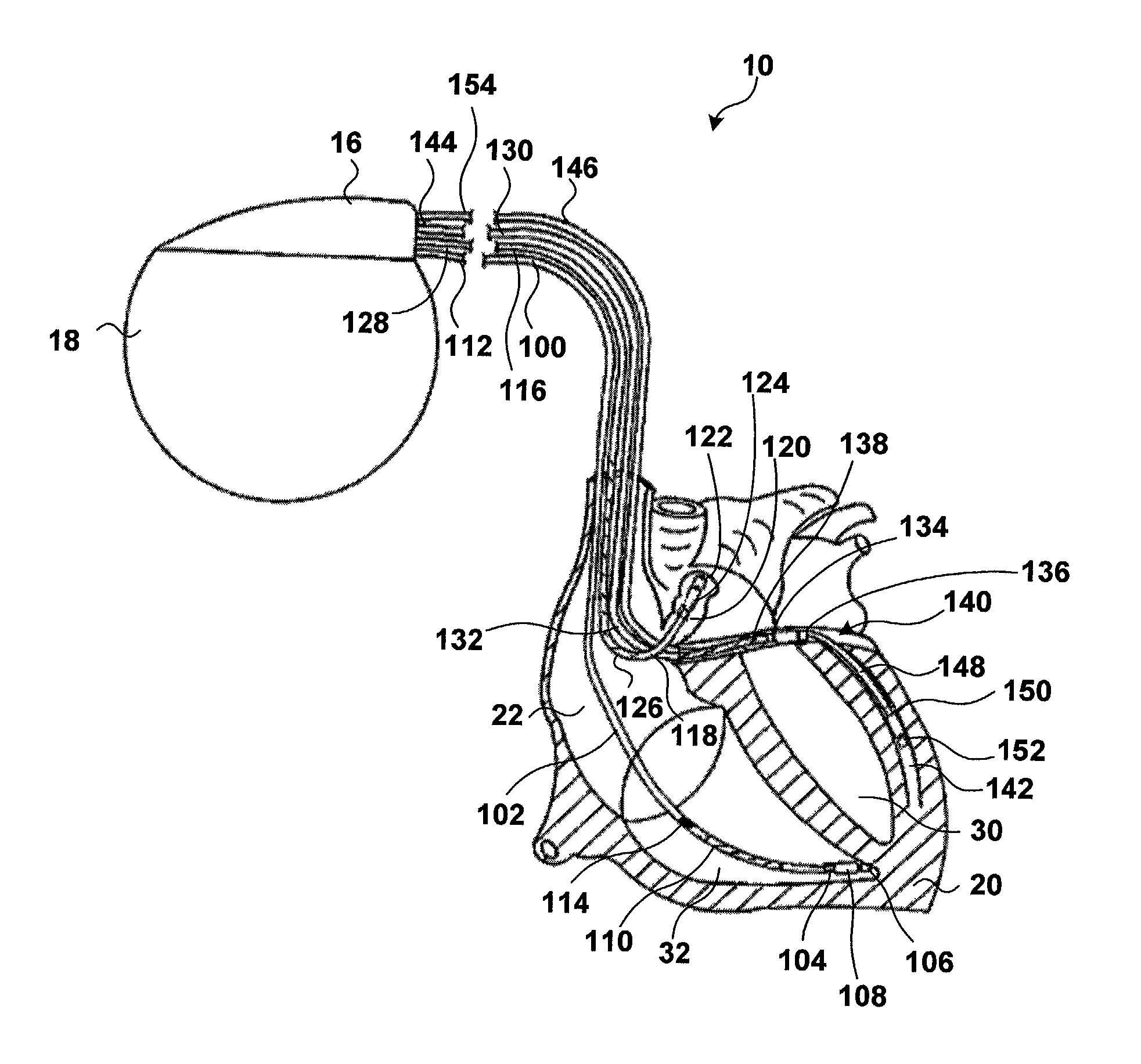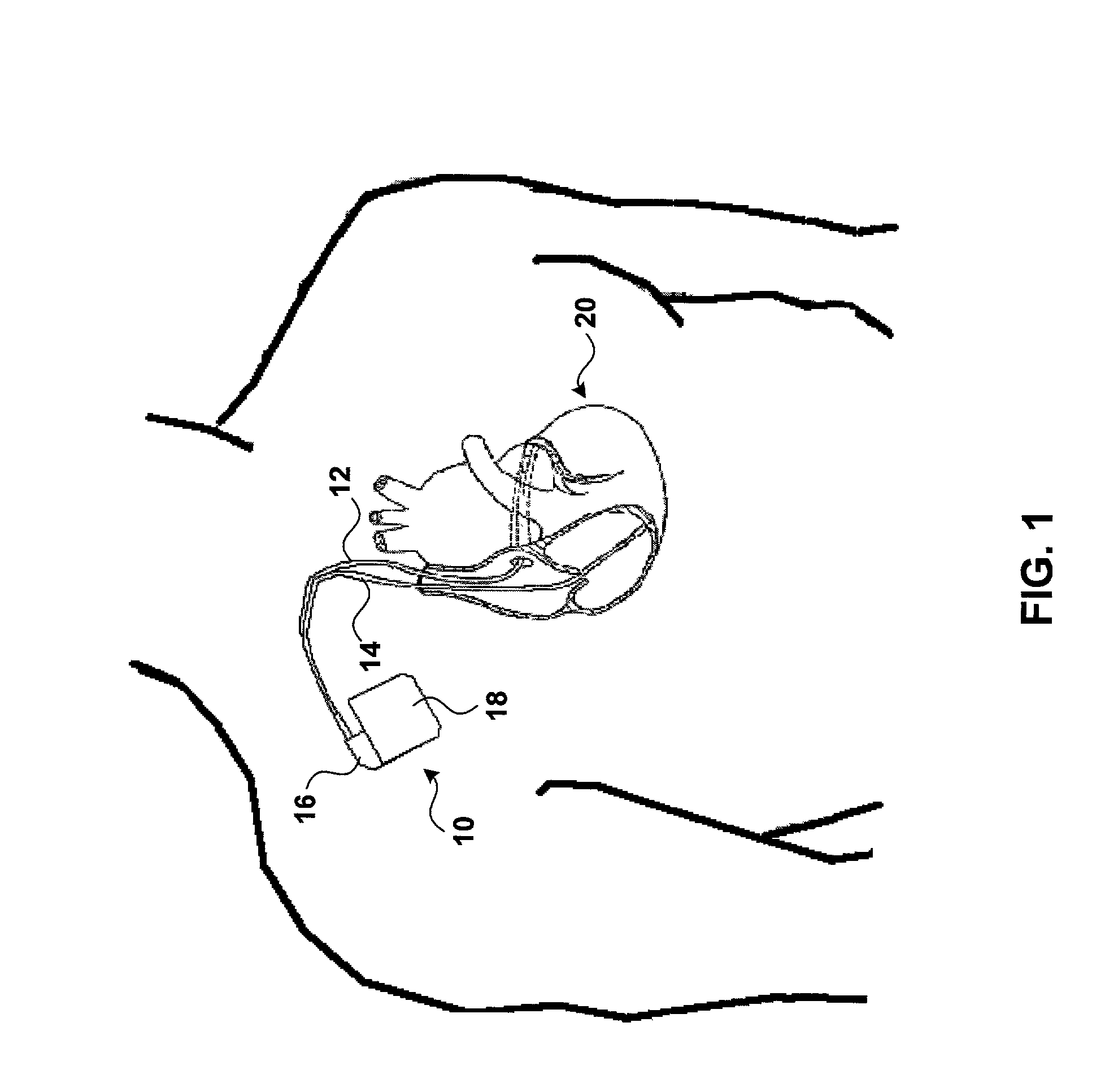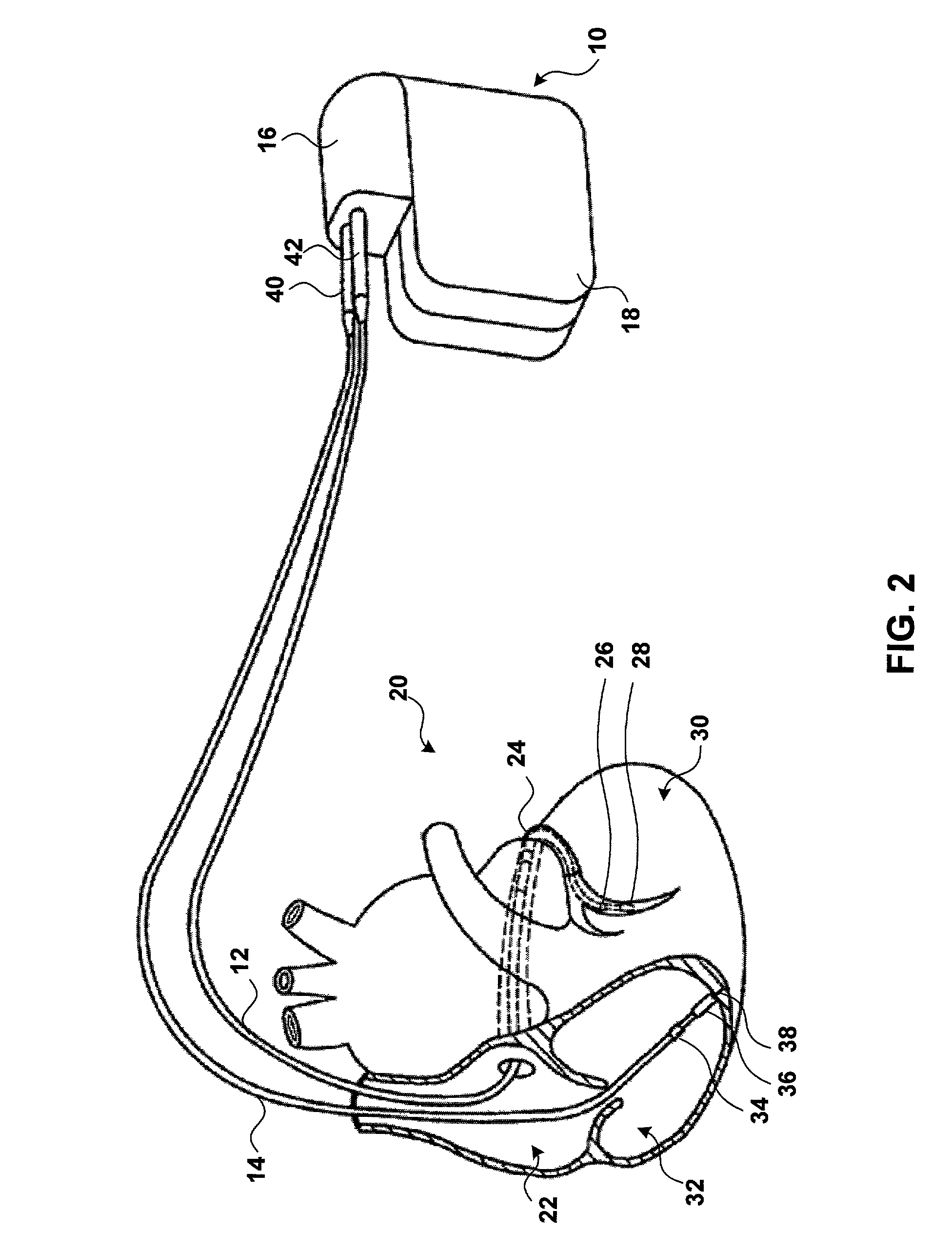Cardiac output measurement using dual oxygen sensors in right and left ventricles
a technology of right and left ventricles and oxygen sensors, applied in the field of cardiac monitoring, can solve the problems of inability to accurately detect current cardiac output, lack of mechanical ventricular synchrony, inability to adapt a pacing interval to changing cardiac output conditions, etc., and achieve the effect of continuous and accurate measurement, avoiding excessive fibrous growth and thrombosis, and simplifying deploymen
- Summary
- Abstract
- Description
- Claims
- Application Information
AI Technical Summary
Benefits of technology
Problems solved by technology
Method used
Image
Examples
Embodiment Construction
[0034]In the following detailed description of the preferred embodiments, reference is made to the accompanying drawings that form a part hereof, and in which are shown by way of illustration specific embodiments in which the invention may be practiced. It is to be understood that other embodiments may be utilized and structural or logical changes may be made without departing from the scope of the present invention. The following detailed description, therefore, is not to be taken in a limiting sense, and the scope of the present invention is defined by the appended claims.
[0035]FIG. 1 is a simplified schematic view of one embodiment of implantable medical device (IMD) 10 of the present invention. In accordance with the invention, IMD 10 may be configured to measure cardiac output, respond to measured cardiac output, or both. In some embodiments, IMD 10 may incorporate one or more leads carrying sensors for sensing blood oxygen saturation levels within the left and right ventricles...
PUM
 Login to View More
Login to View More Abstract
Description
Claims
Application Information
 Login to View More
Login to View More - R&D
- Intellectual Property
- Life Sciences
- Materials
- Tech Scout
- Unparalleled Data Quality
- Higher Quality Content
- 60% Fewer Hallucinations
Browse by: Latest US Patents, China's latest patents, Technical Efficacy Thesaurus, Application Domain, Technology Topic, Popular Technical Reports.
© 2025 PatSnap. All rights reserved.Legal|Privacy policy|Modern Slavery Act Transparency Statement|Sitemap|About US| Contact US: help@patsnap.com



